The Shifting Sands of Architectural Design
For centuries, the fundamental elements of construction and interior design have evolved, reflecting advancements in technology, changes in aesthetic preferences, and the relentless pursuit of functionality. Among these elements, porcelain tile has long held a revered position, celebrated for its durability, versatility, and aesthetic appeal. Historically, porcelain was primarily seen as a practical surface solution, valued for its resistance to wear and tear, moisture, and stains. However, as the 21st century progresses, a significant paradigm shift is underway in the architectural and design world, particularly within dynamic markets like Russia.
Architects and designers are no longer content with conventional sizes and standard finishes. The drive for expansive, monolithic surfaces that minimize grout lines, create a sense of grandeur, and offer unparalleled design flexibility has propelled large-format porcelain tiles to the forefront. Concurrently, the increasing demand for bespoke solutions that perfectly align with unique project visions has fueled a surge in customized porcelain production. This dual trend, epitomized by Russia’s burgeoning embrace of these specialized porcelain solutions, is a direct response to the sophisticated and often ambitious demands of modern architectural projects, from soaring skyscrapers and expansive commercial complexes to luxurious private residences. This article delves deep into the fascinating evolution of porcelain tile in Russia, exploring the drivers behind this monumental shift towards larger, more personalized formats and their transformative impact on contemporary Russian architecture. We will uncover the technological innovations, design advantages, and market dynamics that are positioning Russia as a key player in this specialized segment of the global tile industry.

The Allure of Large-Format Porcelain: Redefining Space and Scale
The visual impact of a vast, uninterrupted surface is undeniable. In the realm of architecture and interior design, the psychological and aesthetic effects of seamless expanses are profoundly appealing. This is where large-format porcelain tiles truly shine, offering a departure from the segmented appearance often associated with traditional, smaller tiles. These impressive panels, often exceeding dimensions of 120×240 cm and even reaching monumental sizes like 160×320 cm or larger, fundamentally alter the perception of space.
One of the most immediate and striking advantages of large-format tiles is the reduction in grout lines. Grout, while essential for installation, can visually break up a surface, creating a grid-like effect that may detract from the desired aesthetic, especially when aiming for a sleek, contemporary look. With fewer grout lines, large-format tiles create a more continuous, expansive, and luxurious surface that mimics the appearance of natural stone slabs, polished concrete, or even seamless wallpaper, but with the superior performance characteristics of porcelain. This visual continuity lends itself perfectly to minimalist design principles, where simplicity, clean lines, and uncluttered spaces are paramount.
Beyond aesthetics, the practical benefits are equally compelling. Fewer grout lines also mean easier maintenance. Grout is notoriously difficult to keep clean and can be susceptible to staining and mold growth over time. The reduced surface area of grout in large-format installations significantly simplifies cleaning routines, making them an ideal choice for high-traffic commercial spaces, healthcare facilities, and busy residential environments where hygiene and ease of upkeep are critical. Furthermore, the sheer size of these tiles can contribute to a perception of higher quality and sophistication, elevating the overall value and appeal of a property.
From an installation perspective, while requiring specialized handling and expertise due to their weight and dimensions, the fact that fewer pieces are needed to cover a large area can, in some scenarios, lead to a faster installation time for the tiling phase itself, particularly on very expansive surfaces. This efficiency is highly valued in large-scale construction projects where deadlines are tight. The robustness of porcelain, combined with the structural integrity offered by fewer joints, also contributes to the overall longevity and stability of the installed surface, reducing the likelihood of issues such as lippage or unevenness over time, provided proper installation techniques are employed.
The Power of Personalization: Custom Porcelain for Bespoke Visions
While large-format tiles address the need for expansive, seamless surfaces, the demand for truly unique and distinctive architectural elements has driven the rise of customized porcelain solutions. Modern architecture is increasingly moving away from standardized, off-the-shelf components towards bespoke designs that reflect a client’s specific vision, brand identity, or the unique context of a building. This trend is particularly evident in high-end residential projects, luxury retail spaces, boutique hotels, and landmark commercial developments where differentiation is key.
Customization in porcelain goes far beyond simply choosing a color from a catalog. It encompasses a vast array of possibilities, including:
- Custom Sizes and Shapes: Beyond standard large formats, manufacturers can now produce tiles in highly specific dimensions and even intricate, non-rectilinear shapes to fit challenging architectural curves, unique floor plans, or decorative patterns. This allows for unparalleled precision in design execution.
- Bespoke Finishes and Textures: While standard finishes like polished, matte, and honed are widely available, custom porcelain can feature unique glazes, specialized surface treatments, and innovative textures that mimic natural materials with remarkable fidelity or introduce entirely new tactile experiences. This includes highly realistic interpretations of wood grains, various stone types, metals, and even fabrics, complete with their subtle imperfections and variations.
- Personalized Graphics and Patterns: With advancements in digital printing technology, it’s now possible to transfer almost any image, pattern, or graphic onto porcelain tiles. This opens up incredible opportunities for branding, artistic expression, and creating truly unique visual narratives within a space. Imagine a corporate logo subtly integrated into a lobby floor, a custom mural spanning an entire wall, or an intricate geometric pattern designed specifically for a historic renovation project.
- Integrated Functional Elements: In some advanced applications, customization can even extend to integrating functional elements within the tile itself, such as lighting features, heating elements, or even acoustic properties, although these are typically more specialized and complex undertakings.
The ability to specify every detail of a porcelain tile – from its exact dimensions and unique surface texture to a completely bespoke graphic design – empowers architects and designers with an unprecedented level of creative freedom. This freedom allows them to translate their most ambitious concepts into tangible reality, creating spaces that are not only functional and durable but also deeply personal and uniquely expressive. In a competitive market, offering these custom solutions provides a significant advantage, allowing manufacturers to cater to a niche but highly lucrative segment of the design industry.
Russia’s Architectural Renaissance: Fueling the Demand
Russia’s urban landscape has undergone a dramatic transformation over the past two decades. Fueled by economic growth, a burgeoning middle class, and a strong national commitment to infrastructure development and urban regeneration, major cities like Moscow, St. Petersburg, Kazan, and Sochi have witnessed an unprecedented wave of construction. This architectural renaissance is characterized by a blend of ambition, innovation, and a desire to create structures that are both globally competitive and reflective of a unique cultural identity.
Modern Russian architecture is diverse, encompassing:
- Grand Commercial Developments: From sprawling shopping malls and mixed-use complexes to towering business centers, there’s a drive for high-quality, visually impressive spaces that convey prestige and modernity. These projects demand durable, aesthetically pleasing, and easy-to-maintain materials.
- Luxury Residential Projects: The demand for high-end apartments and opulent private homes is strong, with discerning clients seeking bespoke interiors that exude sophistication and offer superior finishes.
- Public and Cultural Spaces: New museums, concert halls, sports arenas, and transportation hubs are being designed as architectural statements, requiring materials that can withstand heavy traffic while contributing to an impressive and inspiring atmosphere.
- Hospitality Sector Growth: The expansion of international hotel chains and the rise of boutique hotels necessitate high-performance, visually appealing materials that meet stringent design and durability standards.
In this dynamic environment, the limitations of traditional building materials become apparent. Architects and developers are constantly seeking solutions that offer superior performance, greater design flexibility, and a more sophisticated aesthetic. Large-format and custom porcelain tiles emerge as ideal candidates to meet these evolving needs. Their ability to cover vast surfaces seamlessly, withstand harsh climatic conditions (which is a significant factor in many parts of Russia), and offer endless design possibilities makes them a preferred choice for projects ranging from grand facades and expansive lobbies to luxurious bathrooms and bespoke furniture elements. The Russian market, once heavily reliant on imports, is now seeing a significant push towards domestic production of these advanced materials, driven by both economic incentives and a desire for greater control over quality and supply chains.
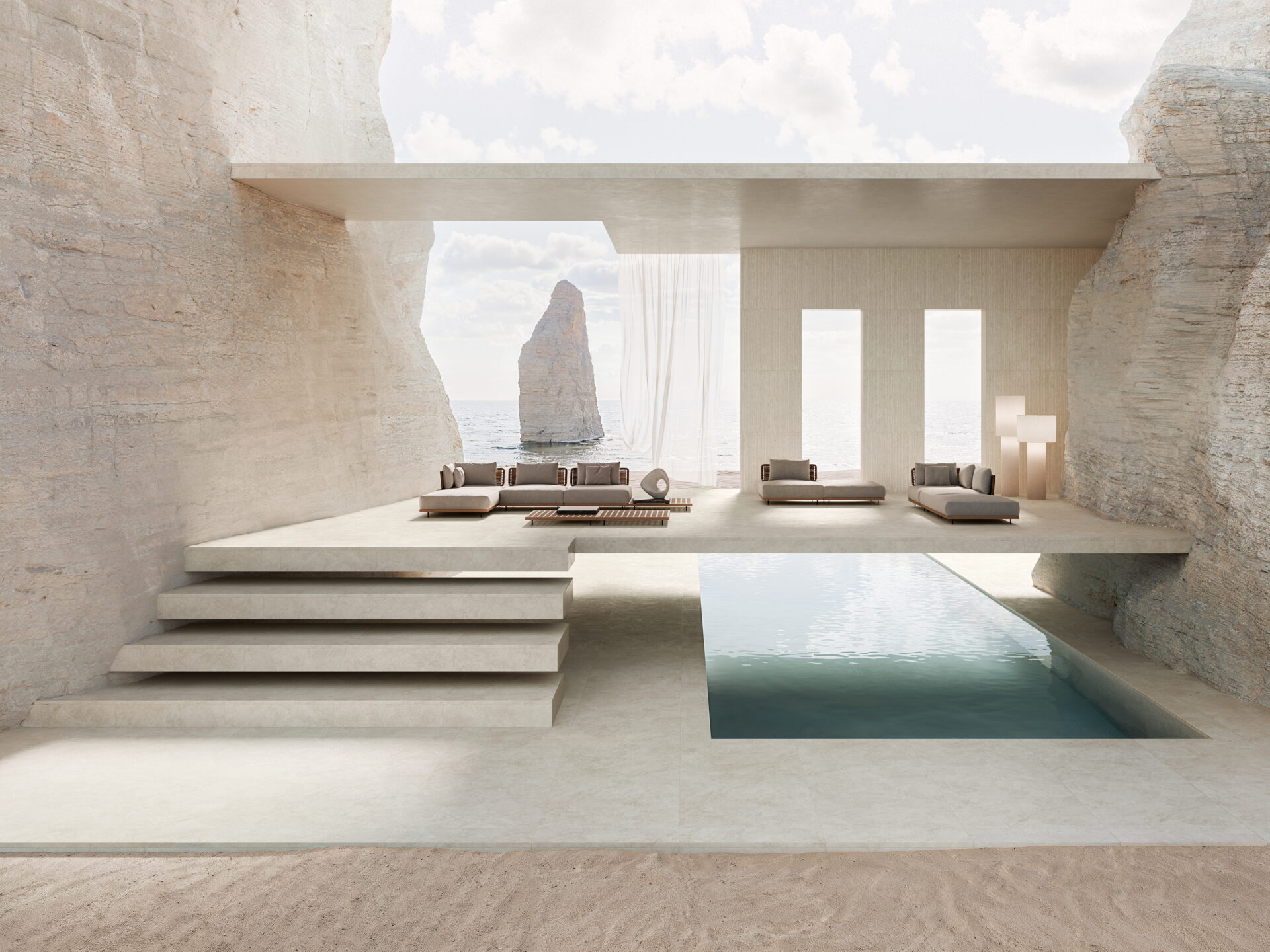
Technological Leaps: Enabling the New Porcelain Era
The evolution of porcelain tiles from humble ceramic squares to expansive, highly customized slabs is a testament to significant technological advancements within the manufacturing industry. These innovations are the bedrock upon which the large-format and custom porcelain trend is built, making what was once technically challenging or prohibitively expensive now achievable and economically viable.
One of the most critical breakthroughs has been in press technology. Traditional tile presses were designed for smaller formats. Modern presses, however, are capable of exerting immense pressure over much larger surface areas, ensuring uniform compaction of the porcelain body, which is crucial for the structural integrity and flatness of large slabs. This high-pressure pressing results in a denser, stronger, and more dimensionally stable tile.
Closely related are advancements in kiln technology. Firing large porcelain slabs requires kilns that can maintain exceptionally uniform temperatures across the entire length and width of the tile. Any significant temperature differential could lead to warping, cracking, or inconsistent vitrification. Modern continuous kilns, often extending for hundreds of meters, are equipped with sophisticated computer controls that precisely manage temperature profiles, ensuring that even the largest tiles are fired consistently and perfectly flat.
Perhaps the most revolutionary development, particularly for custom porcelain, has been digital inkjet printing technology. This innovation has transformed the decorative capabilities of porcelain. Unlike traditional screen printing, which relies on physical screens and limited color palettes, digital printing allows for the direct application of high-resolution images, intricate patterns, and realistic textures onto the tile surface with virtually unlimited color variations. This technology is what enables the incredibly lifelike reproductions of natural stone, wood, and concrete, complete with their subtle veining, knots, and textural nuances. For custom projects, it means designers can create entirely unique artwork or corporate branding elements and have them accurately reproduced on porcelain with photographic quality.
Furthermore, improvements in raw material science have played a vital role. The development of specialized clay bodies and mineral compositions allows for the production of porcelain that is inherently stronger, less prone to cracking during firing, and capable of achieving specific technical properties, such as enhanced frost resistance or improved slip ratings. Cutting and finishing technologies have also advanced, with precision waterjet and laser cutting enabling the production of incredibly accurate sizes, intricate shapes, and perfectly straight edges (rectified edges), which are essential for achieving the minimal grout lines characteristic of large-format installations. These cumulative technological leaps have not only made the production of large-format and custom porcelain feasible but have also enhanced their performance, durability, and aesthetic versatility, positioning them as a premium material choice for contemporary architecture.
Russian Manufacturers at the Forefront: Investment and Innovation
While Russia has historically been a significant importer of building materials, the growing domestic demand for large-format and custom porcelain has spurred substantial investment in local production capabilities. Russian manufacturers are rapidly acquiring cutting-edge technology, upgrading their facilities, and fostering local expertise to compete with established global players. This drive for self-sufficiency and localized production is not merely about import substitution; it’s about building a robust, high-quality manufacturing base that can respond agilely to the specific needs of the Russian market and potentially export to neighboring regions.
Several key factors are driving this domestic investment:
- Strategic Economic Initiatives: The Russian government has implemented various programs aimed at boosting domestic production across various industries, including construction materials. This often includes incentives, subsidies, and preferential treatment for locally manufactured goods, encouraging investment in new factories and technologies.
- Proximity to Raw Materials: Russia possesses abundant reserves of high-quality clays, feldspar, and other minerals essential for porcelain production. This proximity to raw materials significantly reduces logistical costs and ensures a more stable supply chain for domestic manufacturers compared to relying heavily on imports.
- Understanding Local Market Nuances: Russian manufacturers are inherently better positioned to understand and respond to the unique design preferences, climatic conditions, and project specificities of the Russian market. This allows them to tailor their product offerings more effectively, whether it’s developing frost-resistant large-format tiles for harsh winters or creating custom designs that resonate with local aesthetic sensibilities.
- Reducing Lead Times and Logistics: Sourcing large-format and custom tiles internationally can involve lengthy lead times, complex logistics, and higher transportation costs. Domestic production dramatically shortens delivery times, simplifies supply chains, and allows for greater flexibility in order fulfillment, which is a significant advantage for fast-paced construction projects.
- Quality Control and Certification: Producing locally allows manufacturers to exert direct control over the entire production process, ensuring adherence to stringent quality standards and local building codes. This builds trust with architects, developers, and contractors who prioritize reliability and compliance.
Leading Russian tile manufacturers are now investing heavily in state-of-the-art Italian and German production lines, hiring skilled technicians, and collaborating with international experts to accelerate their learning curves. They are actively showcasing their large-format collections and custom capabilities at domestic and international trade shows, demonstrating their commitment to innovation and quality. This commitment is transforming the landscape of the Russian porcelain tile industry, making it a formidable player in the specialized large-format and custom segment.
Applications and Case Studies: Where Large and Custom Tiles Shine
The versatility of large-format and custom porcelain tiles means they are finding applications across an incredibly diverse range of architectural projects in Russia. Their ability to combine aesthetic appeal with exceptional durability makes them suitable for both interior and exterior use, in contexts ranging from the most private to the most public.
۱. Commercial and Public Spaces:
- Shopping Malls and Retail Outlets: Large-format tiles create grand, inviting entrances and expansive walkways that can withstand extremely high foot traffic. Custom branding or intricate patterns can be digitally printed onto tiles in feature areas.
- Office Buildings and Business Centers: Lobbies, corridors, and communal areas benefit from the sophisticated, seamless look of large tiles. Their ease of maintenance is a major advantage in these high-traffic environments.
- Airports and Railway Stations: Given the immense wear and tear in transportation hubs, the durability of large-format porcelain is critical. Custom-designed directional graphics or unique flooring patterns can also be integrated.
- Hotels and Hospitality: Luxurious lobbies, elegant corridors, and high-end bathrooms in hotels are prime candidates for large-format and custom porcelain, contributing to an opulent and refined guest experience.
۲. Residential Architecture:
- Luxury Apartments and Villas: Large-format tiles are increasingly specified for expansive living areas, master bathrooms, and kitchen backsplashes, creating a sense of spaciousness and high-end design. Custom patterns, intricate mosaics, or bespoke finishes can personalize these spaces.
- Facades of Private Residences: The use of porcelain for exterior cladding is gaining traction due to its weather resistance, UV stability, and ability to mimic natural stone or concrete without the associated weight and maintenance.
۳. Specialized Applications:
- Ventilated Facades: Large-format porcelain panels are an excellent choice for modern ventilated facade systems. They offer superior thermal performance, weather protection, and a contemporary aesthetic, while being lighter and easier to install than traditional stone cladding.
- Furniture and Countertops: The thinness and strength of some large porcelain slabs make them suitable for custom furniture pieces, kitchen countertops, island units, and bathroom vanities, offering a hygienic, durable, and visually stunning alternative to natural stone.
- Renovation and Heritage Projects: Custom porcelain can be meticulously designed to match existing historical patterns or materials, providing a durable and sympathetic solution for renovations that need to respect original architectural integrity while updating functionality.
Case Studies (Illustrative Examples – specific project names would require factual research):
- Moscow City Business District: Many of the contemporary skyscrapers in the Moscow City financial district utilize large-format porcelain for both interior public spaces (lobbies, atria) and exterior cladding, chosen for its sleek aesthetic, durability against varying temperatures, and ease of installation on tall structures.
- Luxury Residential Complexes in St. Petersburg: High-end residential developments are increasingly featuring large-format porcelain in living areas and bathrooms to create a minimalist, luxurious feel, often specified with custom textures to mimic exotic marbles or unique wood grains.
- Major Shopping Malls in Kazan: New retail complexes are deploying large-format, high-traffic porcelain tiles throughout their common areas, sometimes incorporating custom patterns for wayfinding or brand integration, showcasing both aesthetic appeal and robust performance.
These diverse applications highlight the immense adaptability and increasing popularity of large-format and custom porcelain in Russia, serving as a testament to its pivotal role in contemporary architectural design.
Challenges and Future Outlook: Navigating Growth
While the trajectory for large-format and custom porcelain in Russia appears overwhelmingly positive, the industry is not without its challenges. Understanding these hurdles and the strategies to overcome them is crucial for sustained growth and innovation.
One primary challenge lies in installation expertise. Handling and installing large, heavy, and often delicate porcelain slabs requires specialized tools, techniques, and highly trained installers. Traditional tiling methods are simply inadequate. The industry needs continued investment in training programs to equip contractors with the necessary skills for precision cutting, handling, and adhesion of these expansive materials. Improper installation can lead to costly failures, negatively impacting the reputation of the material.
Logistics and transportation also present complexities. Moving large, fragile slabs from the factory to the construction site requires specialized packaging and vehicles to prevent breakage. This adds to the cost and complexity of the supply chain, particularly across Russia’s vast geographical expanse. Manufacturers and distributors must develop robust logistical networks capable of handling these unique requirements.
Furthermore, while domestic production is growing, competition from established international brands remains strong. Russian manufacturers must continue to invest in R&D, design innovation, and marketing to differentiate their products and build strong brand recognition both domestically and potentially in export markets. Maintaining consistent quality and offering competitive pricing will be key to capturing a larger market share.
Despite these challenges, the future outlook for large-format and custom porcelain in Russia is exceptionally bright. The ongoing drive for modern, high-performance, and aesthetically sophisticated architectural solutions continues unabated. As Russian architects and designers become more familiar with the capabilities of these advanced materials, their specifications are only likely to increase.
Key trends shaping the future include:
- Further Automation in Production: Continued investment in robotic handling and automated quality control systems will enhance efficiency and precision.
- Sustainability Focus: Manufacturers will increasingly focus on eco-friendly production processes, utilizing recycled materials and minimizing energy consumption, aligning with global green building trends.
- Integration with Smart Technologies: Future porcelain surfaces might incorporate embedded sensors for smart building applications, or even feature integrated heating or lighting elements as standard offerings.
- Diversification of Applications: Expect to see these materials used in even more innovative ways, such as custom-designed street furniture, artistic installations, and even in marine and aerospace applications due to their exceptional properties.
- Export Potential: As Russian manufacturers hone their capabilities and reach international quality standards, there will be increasing opportunities for exporting their specialized porcelain products to neighboring countries and beyond, particularly to markets with similar architectural demands.
The continuous evolution of both manufacturing technology and architectural design philosophies ensures that large-format and custom porcelain tiles will remain at the vanguard of material innovation in Russia’s dynamic construction sector.
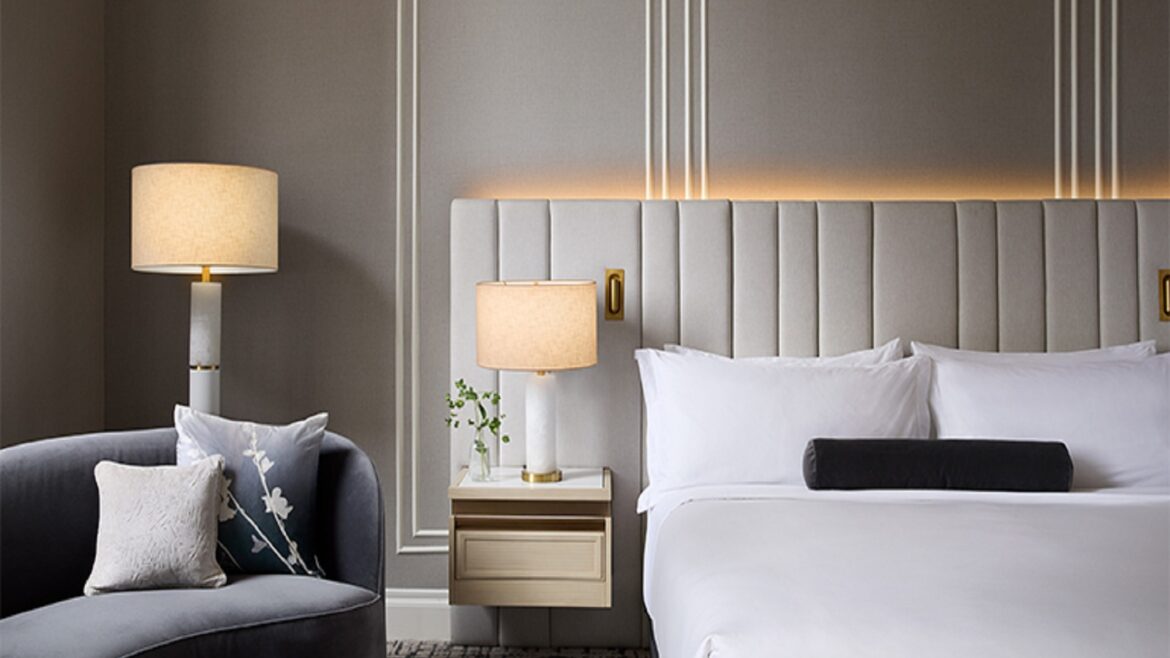
Conclusion: A New Era for Architectural Surfaces in Russia
The architectural landscape of Russia is undergoing a profound transformation, marked by a bold embrace of innovation, scale, and bespoke design. At the heart of this evolution lies the surging demand for large-format and custom porcelain tiles. This trend is not merely a fleeting fashion; it is a fundamental shift driven by the practical needs of modern construction, the aesthetic aspirations of contemporary design, and significant advancements in manufacturing technology.
From the ability of large-format tiles to create expansive, seamless surfaces that minimize grout lines and simplify maintenance, to the unparalleled design freedom offered by custom production for unique architectural visions, porcelain is redefining what is possible in surface design. Russia’s robust investment in domestic production capabilities, coupled with its booming construction sector, positions it as a vital and rapidly growing market for these specialized materials. The commitment of Russian manufacturers to acquiring state-of-the-art technology and fostering local expertise ensures that they are well-equipped to meet the sophisticated demands of architects and developers.
As cities across Russia continue to grow and modernize, the role of high-performance, aesthetically versatile materials like large-format and custom porcelain will only become more pronounced. These materials are not just fulfilling current architectural requirements; they are actively shaping the future of design, enabling the creation of spaces that are not only durable and functional but also breathtakingly beautiful and uniquely expressive. The journey of porcelain in Russia is a compelling narrative of adaptation, innovation, and a clear vision for a future built on quality, scale, and boundless creativity.


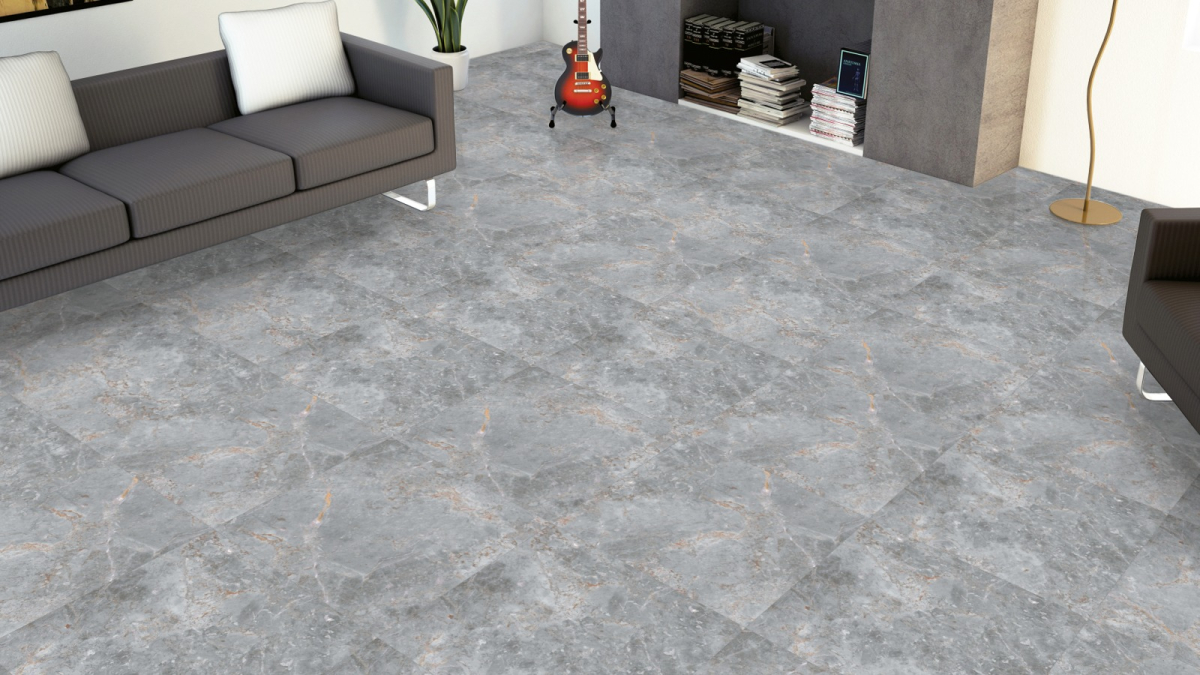
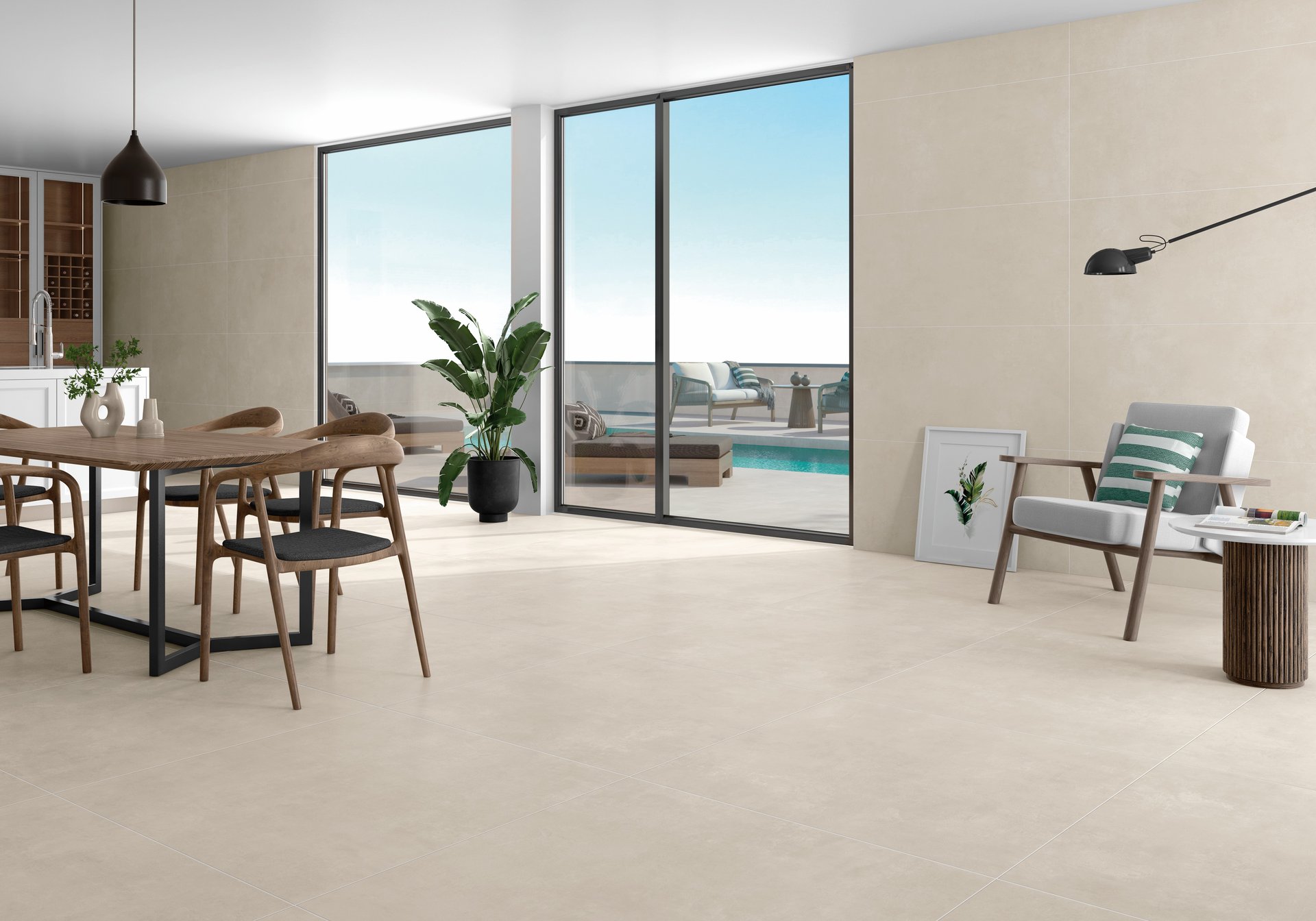
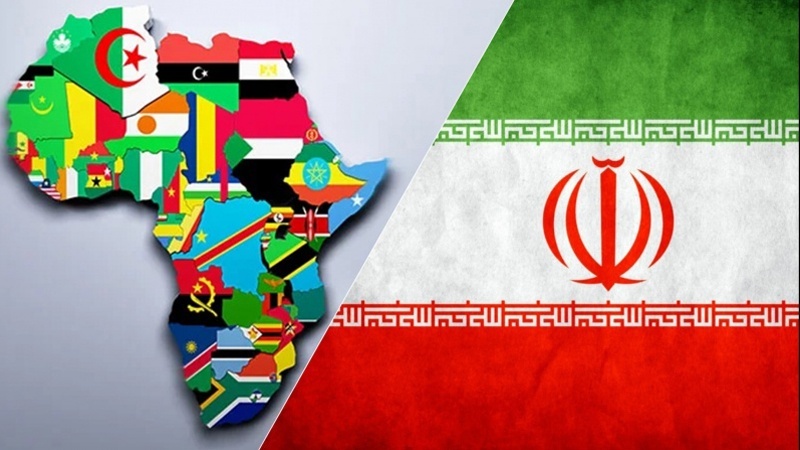
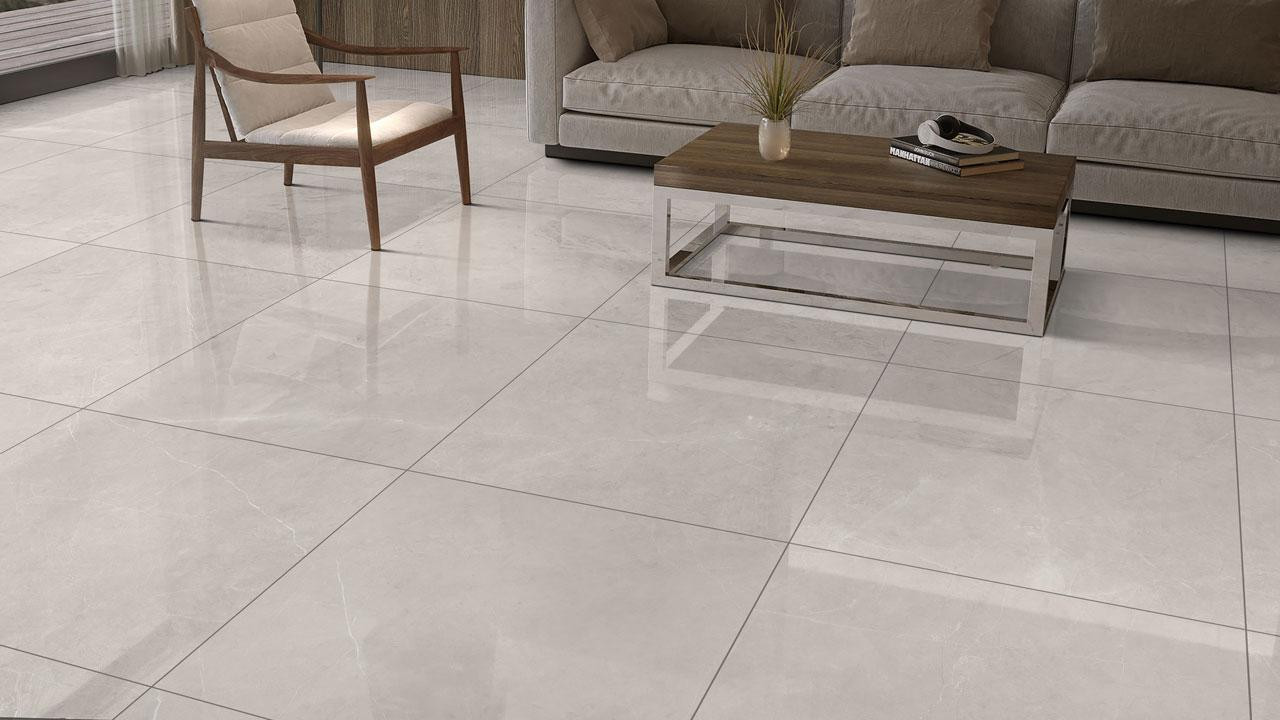
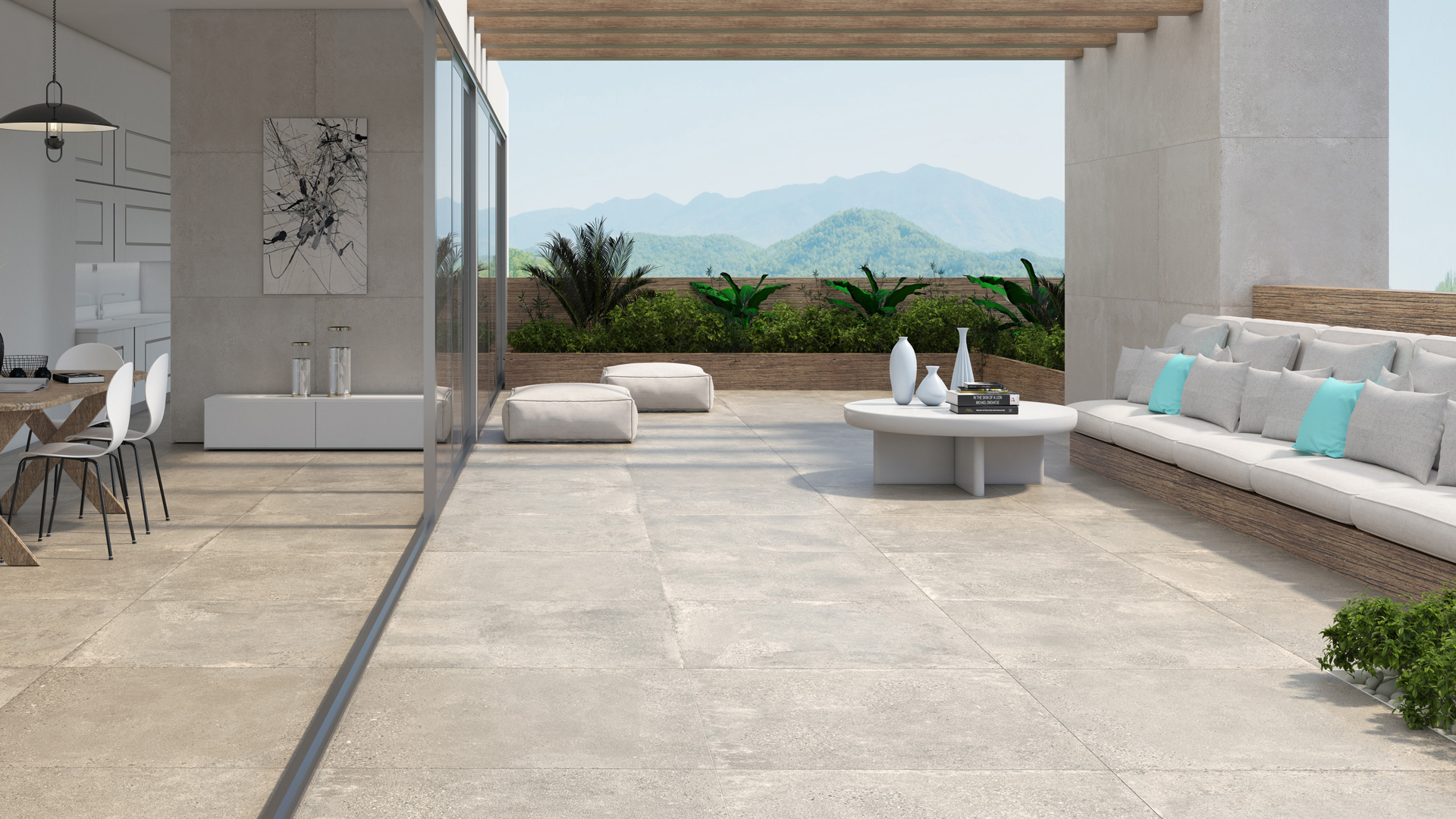

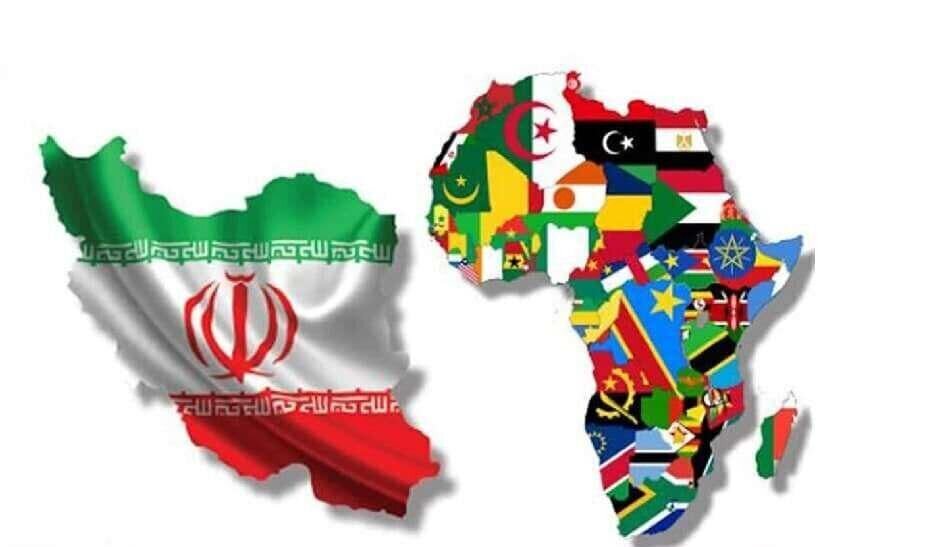
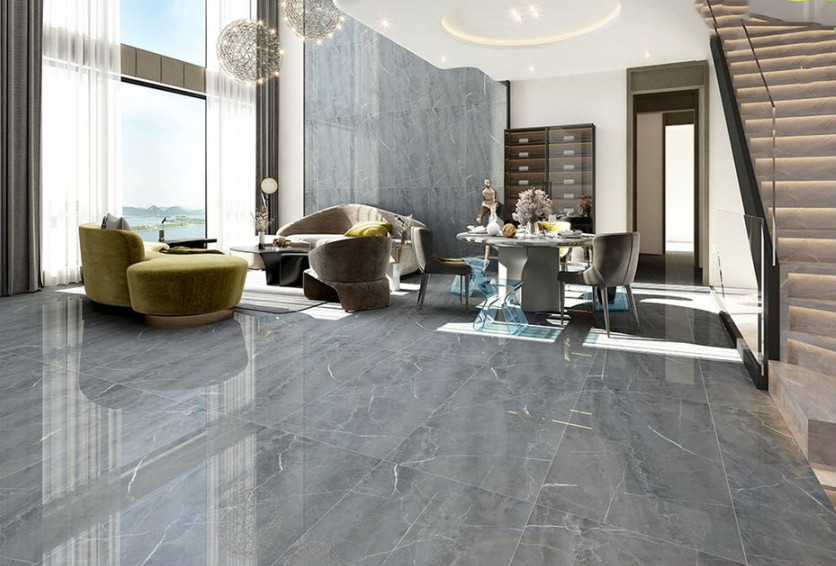
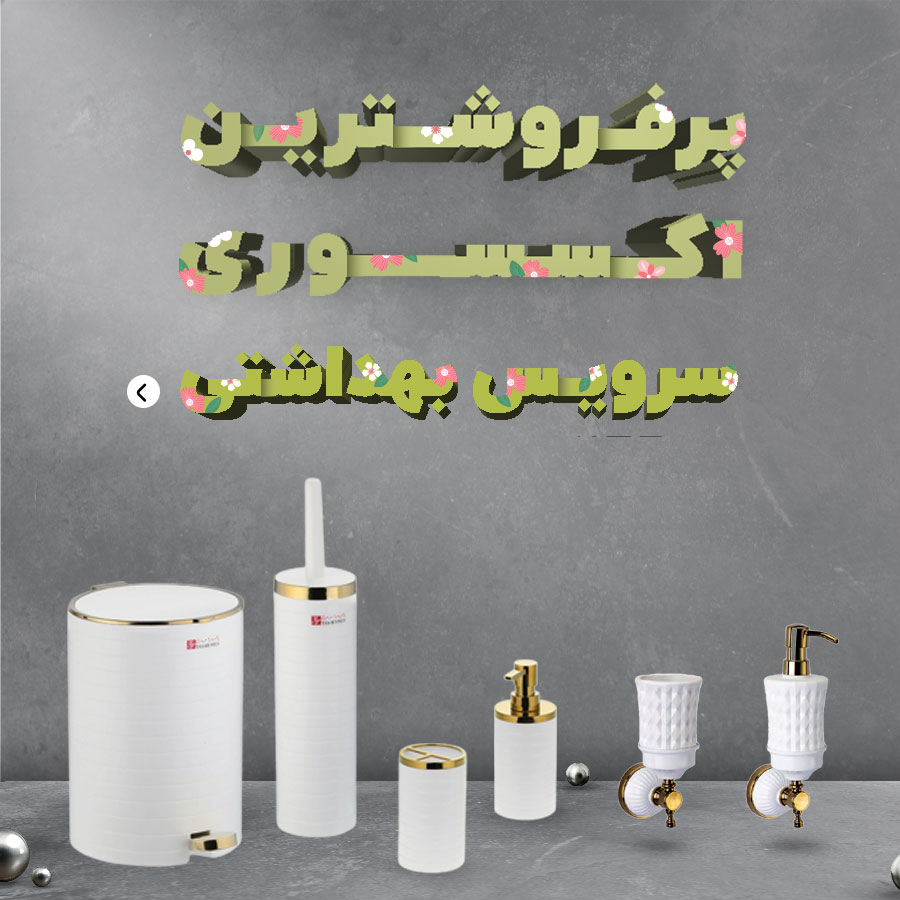

نظرات ۰